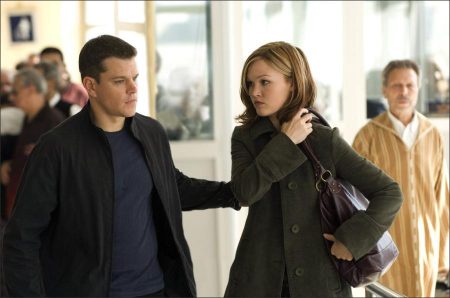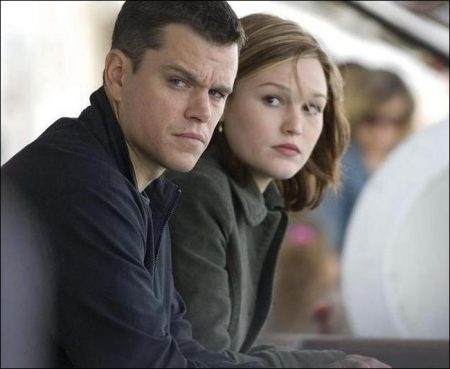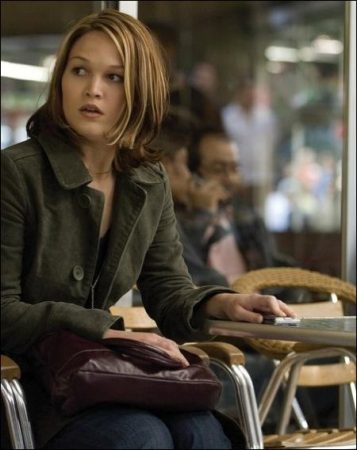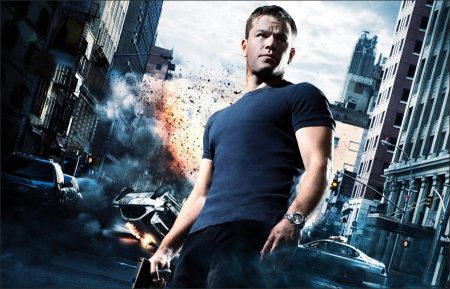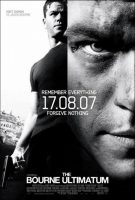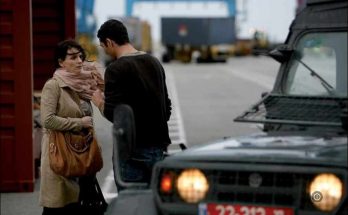Where is Jason Bourne? Shooting Across the Globe
The Bourne Ultimatum Movie Trailer. Bringing back much of the same filmmaking team behind the earlier episodes was necessary to help Greengrass achieve the right texture for this film. “It’s an exciting, suspenseful thriller; it’s got great action,” says Greengrass. “But it’s got to have this labyrinthine, conspiratorial plot set in European locations. It requires a lot of handheld camera and hands-on filmmaking to capture that urgent feel. The expression of that is a mixture of the people who’ve come together to make this film.
Returning creative collaborators include Oliver Wood, the cinematographer on all three films, and The Bourne Supremacy’s editor, Christopher Rouse. “Visually there’s a strong continuity between the Bourne movies,” says producer Crowley. “You want the viewers to feel like they have never seen those places in the way you’re presenting to them now—that it’s dangerous wherever you are.
“The camera is there to record and observe,” he continues. “Much of what Bourne is about is paranoia. This floating camera is entirely subjective, which gives you this sense of a limited point of view. There are always people who want to kill Jason Bourne, and there have been since he came off the Italian fishing boat in the first movie.
Production on The Bourne Ultimatum racked up more transportation miles than the first two films combined. Much like Blackbriar operatives, the company had to remain nimble and adaptable, melding easily into different cultures, climates and countries—without drawing too much attention to itself during the course of production.
“Elements of the Ludlum novels I always appreciated were his locations,” comments Marshall. “We’ve carried that into the movies by taking the audience on a journey and showing them what these places are actually like, not just the tourist areas.”
Whether filming at Heathrow or JFK airports, shooting in the Gare du Nord or Waterloo train stations, driving along in Madrid with Nicky or racing through the streets of New York City with Paz in his Touareg, travel was extensive for the production. The more than 250 people working behind the camera required an experienced crew that could secure locations, equipment and local crews as well as work with people in multiple languages—all to allow filming in seven countries and on three continents.
Tangier
Principal photography for The Bourne Ultimatum commenced in the workingclass city of Tangier, Morocco, located on the North African coast at the western entrance of the Straits of Gibraltar—where the Mediterranean meets the Atlantic Ocean.
While in the second installment of the series, Berlin served as backdrop for post- Cold War intrigue, The Bourne Ultimatum’s locales also resonate with rich history. In the 1940s and ‘50s, Tangier served as an international zone—a meeting place for secret agents and international intrigue. Tangier’s Café de Paris, the location for the scene in which Nicky waits to exchange cell phones with Desh, was a famous haunt of the city’s celebrated expatriate literati.
The walled city know as the Medina comprises a warren of narrow streets lined with thousands of shops and houses stacked one on top of another. “It’s a fascinating area,” Marshall recalls. “It’s very old and therefore had great color for us; it was a great place to have a Bourne chase.”
The company found a number of creative ways to film in the midst of hundreds of onlookers weaving in and out of the various stores. The training of director Greengrass’ cameras was on the daily life of a bustling Arab port city, as he followed Bourne, Nicky and their determined nemesis, Desh, through the winding streets of old Tangier.
The quick-moving, tight action of Bourne darting through the narrow streets of the Medina was creatively captured with the application of multiple, strategically placed cameras. In addition to Greengrass’ signature handheld cams and the use of a crane and dolly tracks, the company outfitted a rig on a cable that slid a camera across the city’s rooftops and closely followed Bourne throughout the heart-stopping chase.
Stunt coordinator and second-unit director Dan Bradley returned from his work on the second film with a new crop of innovative action sequences for Ultimatum. Production designer Peter Wenham collaborated with Bradley and Greengrass to find the perfect setting for the Tangier roof chase of Bourne and operative Desh. “I found a series of three large houses in the Jewish quarter,” Wenham recalls. He had an “idea of Bourne jumping through windows into these buildings and continually running through other people’s lives, and then over balconies to other houses.”
In one spectacular sequence shot in Tangier, Bourne dives 15 feet from a rooftop that is four stories above the narrow street below—straight into the window of an apartment across the way, with the camera making the leap directly behind him. “Dan figured out ways to get stuntmen to run with the camera off the roof,” Damon explains. “When you see the film, you know Bourne’s running across these roofs. It’s just captured perfectly by a smart director with an unbelievable visual style and by these athletes who did things that can humanly be done.”
The chase culminates in brutal hand-to-hand combat between the highly skilled operatives. Having previously trained in boxing and other fighting styles, Damon worked with fight choreographer Jeff Imada—his trainer in Identity and Supremacy—to portray this sequence and the fight in the Waterloo station. “It was more learning it like a dance,” Damon describes, “and to understand balance and how I should move. The challenge is figuring out how to make the performance more believable.”
To allow Damon and the stunt team to jump from tens of roofs and stage an explosion in the middle of the overcrowded Medina, the production had to secure contracts with more than 2,000 businesses. A U.K. crew of more than 200 was joined by a local team from Tangier that helped to navigate the endless logistical decisions that The Bourne Ultimatum brought to Tangier. And that didn’t include the challenges of filming during the Muslim month of prayer, self-reflection, charity and fasting that is Ramadan—occurring in the middle of production and affecting cast and crew hours of availability.
London
The company shot 13 days in Tangier before loading a Soviet-era Russian cargo jet with equipment and heading to London. At the home base of London’s Pinewood Studios, the production re-created the interiors of locations in New York, Paris, Madrid, Tangier and Berlin (used to double for Moscow), under the guidance of production designer Wenham. The Hub, the headquarters of the government-funded CRI (Controlled Resources International), became the nerve center of the Vosen/Landy operation, where the action sequences swirl on monitors. “It’s where they manage Blackbriar agents,” explains Wenham. “The surveillance screens have footage of various locations we filmed around the world. Some screens ran real data.”
It required two months of intensive meetings with director Greengrass and surveillance experts to design the film’s largest, most complex set. Wenham notes, “The story globe-trots from the listening post of CRI, and a lot of consideration went into the CRI hub.” Labyrinths of corridors were created so Greengrass and cinematographer Wood could walk through with handheld cameras and capture events in the inner core of the windowless building, where all the “nasty stuff” occurs.
Wenham’s team re-created CRI to match the final scenes from Supremacy. From functioning equipment—computers that called up data required by the actor running them and monitors wired with various location footage—everything was exact, down to the window view of the New York City skyline. The trans-lights (large, high-resolution photographic images) outside the set were previously shot in Manhattan. “Each room has been dressed and built to replicate a New York environment,” notes Wenham. “Every detail—wall sockets, equipment, dressing, graphics—is American.”
From the home base of Pinewood, the production shot within and around London on streets, in office buildings, hotels and in an underground station. Train stations make several appearances throughout The Bourne Ultimatum. From Bourne’s arrival in Paris at the Gare du Nord to his entrance in Madrid at Atocha—the Spanish station that had only three years earlier been the site of a bombing that killed almost 200 people—stations dot the film. But it is Waterloo Station in London that receives a starring role.
In the thriller’s most complicated sequence, Bourne tries to direct the increasingly panicked journalist Simon Ross to safety before CRI operatives can dispose of him. It is also a sophisticated cat-and-mouse chase, with Blackbriar operative Paz sent to take out the target. For these scenes, legendary armorer Simon Atherton (Raiders of the Lost Ark, Black Hawk Down, Saving Private Ryan) provided actor Edgar Ramirez with Paz’s specialty instrument. “He had to have a weapon that would allow him to take out a subject at 50 meters,” comments Atherton. “So we picked a small assault rifle with a silencer fitted onto the end that operates on a single shot, and we used it with blank ammunition.”
One of the five main-line train stations in London, Waterloo has a stunning 380,000 people traveling through daily. It took five months of negotiations to secure the handful of days the company shot at this central station. The enormous challenge would make Bourne’s world that much more believable. “Anywhere you film where business goes on as usual you have to work around the crowds and commuters,” says Marshall, “Certainly, Waterloo was no different.”
With British transport police, a film security force of 20, and hundreds of CCTV cameras watching the cast and crew’s movements, it felt as if Bourne really was on the loose. Fortunately, Greengrass and company were able to take feeds from the cameras to lend even more credibility to the scenes. Coupled with shots selected from the disused track and platform Charing Cross, it was almost time for Bourne to leave town.
Next, it was off to Paris. Greengrass, Damon and crew shot on the Eurostar as the company made the trip from London through the Chunnel—the 50.45 km (31.35 mile) long rail tunnel that runs beneath the English Channel to link London to Paris. They traveled with minimal equipment and a bare-bones crew squeezed into the train’s last two cars. “We tried to use all the facilities and all of our time to the greatest efficiency,” remarks Marshall. “We had the camera on the train, and we did a scene on it. And then we did the same returning to London.”
Paris, Madrid and Berlin
In Paris, production set down to capture the scenes in which Bourne lands at the Gare du Nord—where he prepares for his difficult meeting with Marie’s brother, Martin Kreutz, to inform him of her death.
Chasing down leads to find the only real link he has ever had with his past—agency bureau chief Neal Daniels—takes Bourne to Madrid, a city of more than three million and the seat of the Spanish court for nearly five centuries. Among the narrow streets and grand plazas, cafes and residences, production lensed Bourne’s search for Daniels’ safe house, and the action that ensues.
In addition to shooting in Madrid’s Atocha train station, the company shot the exterior of Daniels’ office—where Bourne confronts CRI agents and runs into Nicky for the first time since he held her hostage in Supremacy—in the center of the Spanish city on the Calle de la Virgen de los Peligros. Additionally, they lensed a meeting between journalist Simon Ross and Neal Daniels in the Plaza Santa Cruz, adjacent to the city’s grand Plaza Mayor. The intimate scene in which Bourne questions Nicky about his past unfolds at a truck-stop cafe, shot on the A-30 road southwest of Madrid. Finally, Berlin stood in for Moscow, and allowed the filmmakers the continuity needed after the final scene in Supremacy. Locations include the Platz der Vereinten Nationen and the Bahnhof Lichtenberg.
New York City Photography and Stunts
As a location for the conclusion to the path Bourne has taken in this episode, New York City loomed large for the final locale for The Bourne Ultimatum. “One of the reasons we came to New York is because we needed to bring Jason Bourne home,” says producer Crowley. “I think there’s no better city to be able to say ‘He’s in America.’”
Shooting in the complicated, busy metropolis of Manhattan presented a number of challenges to the company. Without the cranes, dolly tracks and lights that usually accompany film productions, the team fortunately drew less attention to itself. Director Greengrass’ intimate shooting style meant the actors were often on the street with commuters headed to work or returning home—sometimes unaware of a major motion picture being shot in their midst.
The opposite was true of the second unit, which shot the car chase on New York City streets, using vehicles modified for the fast-moving film sequences. The Bourne Ultimatum’s final, epic car chase—among Bourne, Paz and scores of CRI agents and NYPD officers—starts off in New York’s Port Authority parking lot, careens down Seventh Avenue through the streets of the Big Apple and ends with a cataclysmic crash along a K-Rail on South Street at the Seaport—but not before accumulating mounds of battered steel, broken glass and destroyed cars along the way.
Production was able to shut down Seventh Avenue to accomplish part of the chase. “When do you shut down Seventh Avenue?” laughs Damon. “It runs right down the center of the island. It was incredible—the logistics of pulling this off.”
In a warehouse on a closed military facility across the river from Manhattan in Bayonne, New Jersey, the team prepped and modified six Volkswagen Touaregs for Paz, 10 CRI Chryslers and various other civilian and police cars to participate in the climactic sequence. The cars needed to remain safe for the stunt drivers, but they also had to (without crumpling) bore into other cars like a battering ram.
Bradley and his Go Mobile—a high-speed, low center of gravity, chassis replacement stunt driving camera platform fabricated by Go Stunts, Inc.—team rigged several vehicles with various equipment in order to capture as many angles of the chase as possible. Remote-drive vehicles, or RDVs, allowed the actors to appear to be manning the careening cars while a professional stunt driver (atop the car) was actually driving them.
While the final crash sequences were mostly sheltered from public view by an overpass, the scenes on streets were a free car-stunt show for the amassing New York onlookers. On the weekend (the only days the company would be allowed to block traffic on the busy streets of Manhattan), quite a crowd gathered to watch the activities of spies in their midst.
Damon was continually impressed with the inventiveness of this setup. “How is it that Bourne is in the foreground, and we’re with him in the middle of a car accident right off his rear bumper? He’s got to be driving the car! The answer is that Dan invented the Go Mobile, so people who love making movies can just geek out over this and see the level of technical proficiency.”
The Bourne Ultimatum (2007)
Directed by: Paul Greengrass
Starring: Matt Damon, Julia Stiles, Joan Allen, David Strathairn, Paddy Considine, Edgar Ramirez, Daniel Brühl, Corey Johnson, Lucy Liemann, Joey Ansah, Colin Stinton
Screenplay by: Tony Gilroy, Tom Stoppard
Production Design by: Peter Wenham
Cinematography by: Oliver Wood
Film Editing by: Christopher Rouse
Costume Design by: Shay Cunliffe
Set Decoration by: Tina Jones, Eliza Solesbury
Art Direction by: Robert Cowper, Alan Gilmore, Jason Knox-Johnston, Andy Nicholson
Music by: John Powell
MPAA Rating: PG-13 for violence and intense sequences of action.
Distributed by: Universal Pictures
Release Date: August 3, 2007
Views: 276
